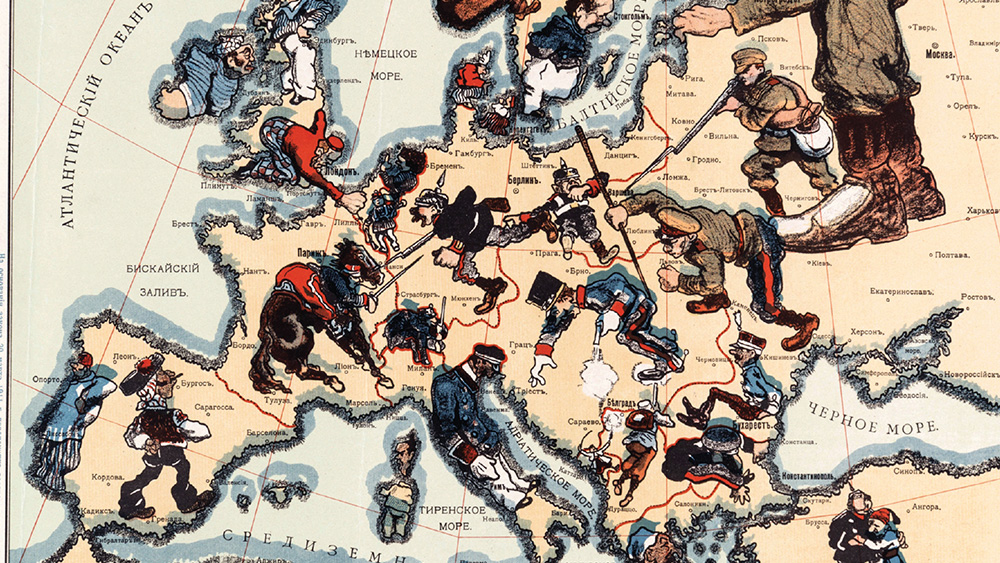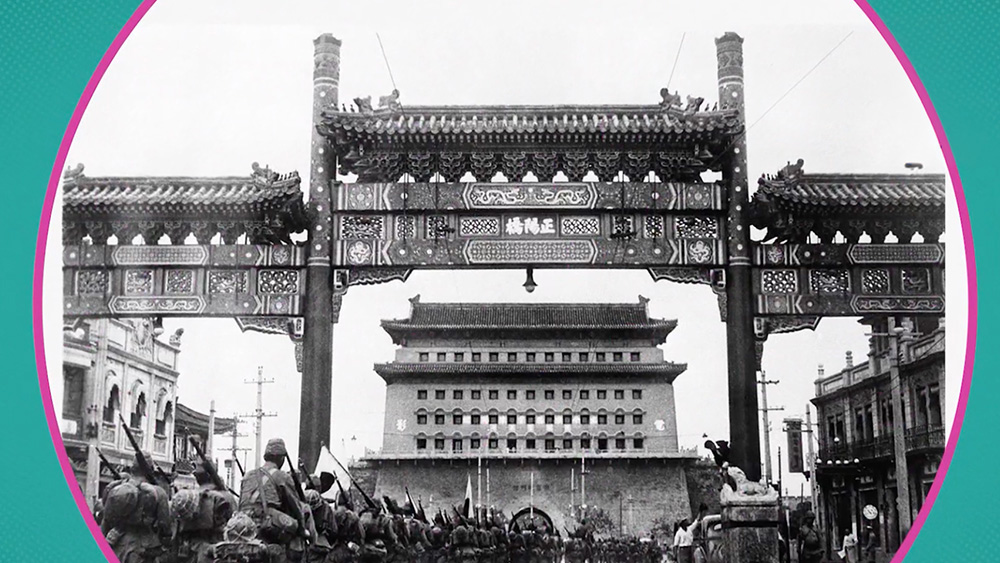Unit 7: Global Conflict
c. 1900 to the presentThe transformations of the long nineteenth century set the stage for an era of unprecedented warfare, atrocity, and threat to our species’ survival.

Lesson 7.0
Global Conflict
The early twentieth century saw two devastating world wars that caused massive destruction. Nations, societies, and economies were upended worldwide. This era reshaped global history.

Lesson 7.1
Shifting Power After 1900 CE
In the long nineteenth century, industrialization and colonialism enriched a new ruling class. By the early 1900s, workers worldwide challenged this power, agitating for social and political change.

Lesson 7.2
Causes of World War I
The First World War had multiple causes—political, ideological, economic, and social—that developed during the long nineteenth century and culminated in a complex conflict that lasted from 1914 to 1918.

Lesson 7.3
Conducting World War I
The First World War began in Europe’s empires but quickly involved nations and colonies across the entire world. New weapons and massive mobilization made it the first truly global conflict.

Lesson 7.4
The Economy in the Interwar Period
The 1929 US stock-market crash triggered a global depression due to growing economic interdependence. Nations reacted differently, with many states gaining power and some turning toward authoritarian rule.

Lesson 7.5
Unresolved Tensions After World War I
Many hoped for a lasting peace after World War I, , but harsh war punishments and territorial disputes fueled tensions, setting the stage for future conflict.

Lesson 7.6
Causes of World War II
The rise of fascism and failure of internationalism ended the fragile peace that followed the First World War. The Second World War was to be the deadliest war in history—and it changed humanity forever.

Lesson 7.7
Conducting World War II
Twenty years after the First World War, the another, even deadlier world war erupted. New tactics and technology made the Second World War even more destructive and devastating than the first global conflict.

Lesson 7.8
Mass Atrocities After 1900
World War II and the Holocaust caused immeasurable loss. The war also accelerated movements against colonialism, as new mass atrocities took place during wars of independence.

Lesson 7.9
Causation in Global Conflict
Analyze and revise essays focusing on evidence, sourcing, and complexity. Connect unit themes by examining the Nazi Party’s rise in Germany through a DBQ that demonstrates your understanding.
 Teaching This Unit
Teaching This Unit
Unit 7 Vocab
Key Unit 7 vocabulary words and definitions.

Graphic Bios Guide
How to incorporate graphic biographies into the classroom.

Vocabulary Guide
Strategies and routines for building vocabulary.

Assessment Guide
Learn about OER Project’s approach to assessment.

Data Literacy Guide
Clear, concise strategies to help teach data literacy and build student confidence with data visualizations.

Unit 7 Teaching Guides
All the lesson guides you need in one place.